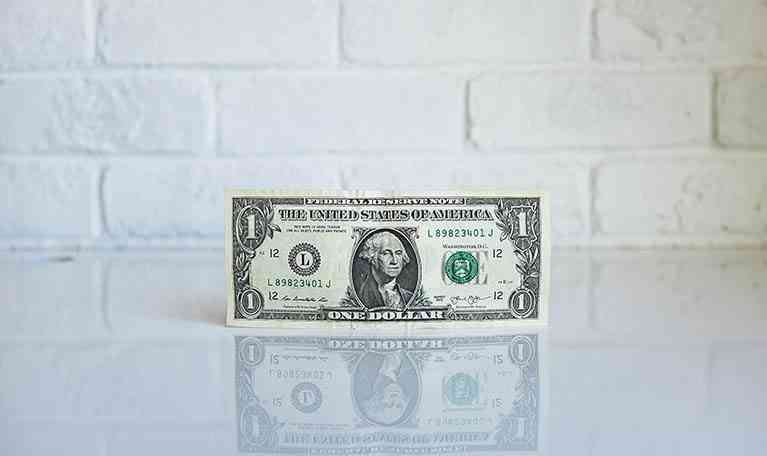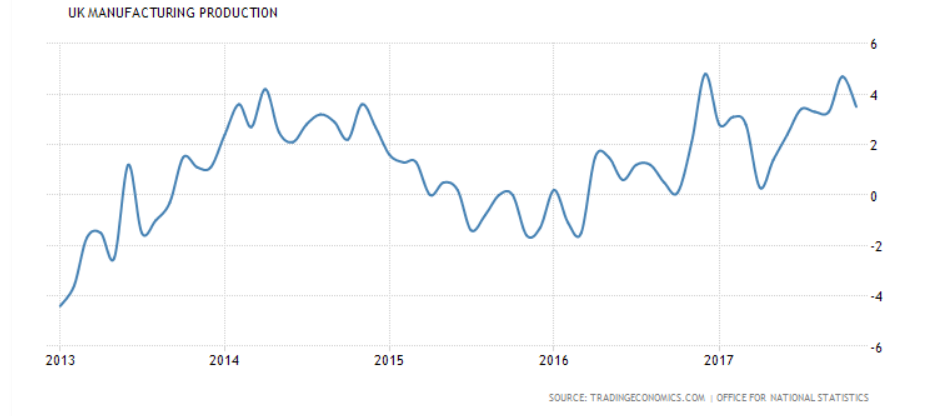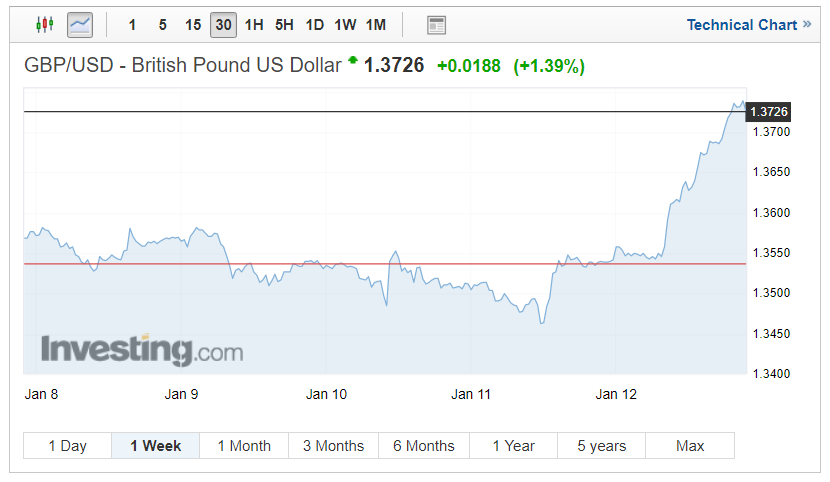The GBP to USD Exchange Rate exceeded the levels seen in 2017 passing the 1.3593 high of mid-September. The spike in part was fuelled by a mixture of positive UK data, Trump being highlighted as a liability and weaker US Inflation data.

Weaker US Dollar
Trump’s circus continues
Trump continued to boost the GBP to USD exchange rate this week with more scandal. In a groundhog style moment once again, Forex News Shop finds itself commentating about another gaff from the US president. This week it concerned the way in which the president has apparently described a handful of African nations. The comments which I feel don’t justify repeating have been condemned globally with fifty-five nations condemning the US President as a ‘Clearly racist’.
The United Nations were also appalled, and their human rights spokesperson Robert Colville stated
“There is no other word one can use but racist. You cannot dismiss entire countries and continents as ‘s*******s’, whose entire populations, who are not white, are therefore not welcome.”
The African Union was just as vexed stating it was troubled by the president’s language, Ebba Kalondo the African Union’s spokesperson affirming
“Given the historical reality of how many Africans arrived in the United States as slaves, this statement flies in the face of all accepted behaviour and practice,”
Trump’s comments which were apparently made during a meeting on Thursday were heard by both republicans and democrats and have naturally been confirmed by Democrats with Dick Durbin stating the accusations were ‘entirely accurate’.
Naturally, Trump has denied the accusations, conceding that the discourse was tough but not derogatory.
Robert Mueller’s investigation continues
This humiliation follows revelations only a few days before that the president will almost certainly be interviewed by the head of the investigation into whether Trump’s campaign colluded with the Kremlin.
It is understood that Trump is willing to meet with Mueller which many have dubbed potentially as Trumps biggest battle. The interview would mean the president being quizzed on topics such as Russian Election interference and obstructing justice. Whilst the chances of the president being legally charged remain almost non-existent many in the Trump’s entourage fear he could open himself to self-perjury and risk eventually being indicted.
Many of the presidents are believed to be encouraging him to avoid the interview for fear that Trump could legally find himself in a tenuous scenario.
US CPI inflation data
This week’s upward GBP to USD exchange rate movements were thankfully not just motivated by political scandal and uncertainty. The US also posted weaker than expected PPI figures, PPI which is the leading indicator for consumer inflation showed a negative -0.1% from last month’s reading of 0.4%.
The data highlights the first decline since August 2016, the slump following two consecutive months of growth of 0.4%. As a key instigator of 2018 rate hikes inflation and employment/unemployment will be instrumental to future US interest rate hikes.
US unemployment claims
Another shot in the arm for the GBP to USD exchange rate was this week’s dismal US unemployment figures which missed the target and highlighted a trend. US unemployment claim rates have now missed expectation for 4 months consecutively. This month the US received 261,000 new unemployment claims against a forecast of 246,000. The highest since late September 2017.
Strong UK economic data
Speaking of trends, the GBP to USD exchange rate was supported by the UK’s impressive manufacturing data which posted a 0.4% rise in December. The data higher than the 0.3% that the Bank of England had predicted. The UK’s manufacturing sector has either met or exceeded in its last 6 forecasts essentially fuelled by the historically weak pound.
UK manufacturing is now at its strongest point in a decade, which is a pity considering trading conditions will almost definitely change in a post Brexit era.
Key areas of growth included the aeronautical production, cars and the renewable energy the majority of which will be exported.
Theresa May’s cabinet reshuffle
The week also welcomed a well needed conservative party cabinet re-shuffle which brought its own dose of controversy. Many had wanted this restructure to be used for the prime minister to stamp some authority and potentially silence critics who had doubted her since the disastrous general election and erroneous Brexit negotiations.
Many of Mays cabinet remained in situate, her intention almost certainly to not rock the boat following the recent Brexit break through and second round of negotiations
In total, the re-shuffle saw four new cabinet members join the government’s cabinet. Those enjoying promotion included –
- Damian Hinds who was promoted to education secretary. The former management consultant who has previously served the Department of Work and Pensions as education minister, junior treasurer and whip. Hinds has held the role of MP for East Hampshire since 2010.
- Matt Hancock also received a promotion to Culture, media and sports secretary. Hancock, a former Bank of England economist has been MP of West Suffolk since 2012 and is the only modern time MP to have won a horse race.
- Esther McVey the former GMTV presenter proved a residing staring under David Cameron’s government. Securing the West Wirral seat in 2010, she lost the post in 2015 however, re-secured the constituency in 2017.
- Brandon Lewis was made conservative party chairman. He replaces Sir Patrick Mcloughlin who stood down. Formally Lewis occupied the posts of housing minister and momentarily immigration minister. More recently he has focused his attention on rebuilding the conservative party’s strengths for the next election.
This week’s GBP to USD exchange rates overview
Following the weaker than expected US economic data and continually developing situations with Trump, the GBP to USD Exchange Rate propelled surpassing Septembers’ 2017 high of 1.3593. The weeks low was 1.3464, the last few dates saw GBP to USD Exchange Rate accelerate dramatically with Fridays’ trading seeing a 1.39% appreciation in GBP to USD Exchange Rates.
Many analysts believe that despite the trials and tribulations surrounding Brexit that GBP to USD Exchange Rates could head towards pre-Brexit levels, with some debating whether the GBP/USD currency pair could challenge the 1.50 mark in the final quarters.

